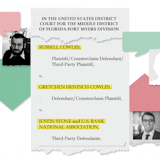The three-point line made its debut in the NBA on Oct. 12, 1979, and nine games opened the season that night.
Across those games, the 18 teams made only eight threes. Some, like the San Diego Clippers or New Jersey Nets, didn't bother attempting any.
Those numbers appear quaint when compared to the modern NBA, where a quarter might not go by without eight threes falling.
There was a lot of discussion in the early days of the three-point line that it might tarnish the game. That it wasn't pure basketball.
But decades went by without teams fully embracing the game-changing potential of the three-point shot. For years, boxscores resembled that first night. That first season, teams averaged 0.8 makes and 2.8 attempts. It took eight seasons before they averaged more than one made three per game. It took 14 years — and a short-lived rule change to make the line closer — before teams started attempting more than 10 per game.
The drastic change to the game some feared when the three-point line was painted on NBA floors 40 seasons ago took a while to get here, but it came, and has warped into overdrive the past five.
It's become an integral part of strategy and success in the modern NBA, and the start of the playoffs Monday will be a good reminder of that. Of the seven teams that made the most threes per game in the NBA this season, six made the postseason.
Whether it's good for the game is a matter of personal taste. But with teams averaging about 34 attempts per game, there's not likely to be a contraction to the old days. The game has changed forever.


